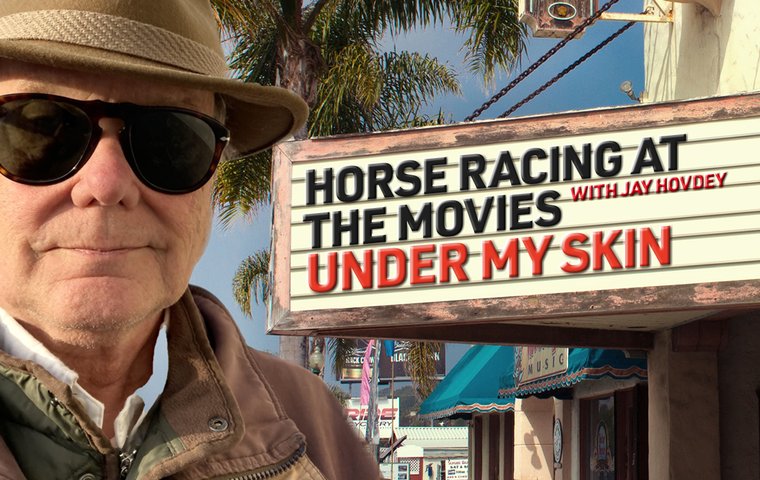
Our movie correspondent continues his popular series with a feature from 1950 based on a short story by Ernest Hemingway – a racing devotee who described the sport as a ‘demanding friend’
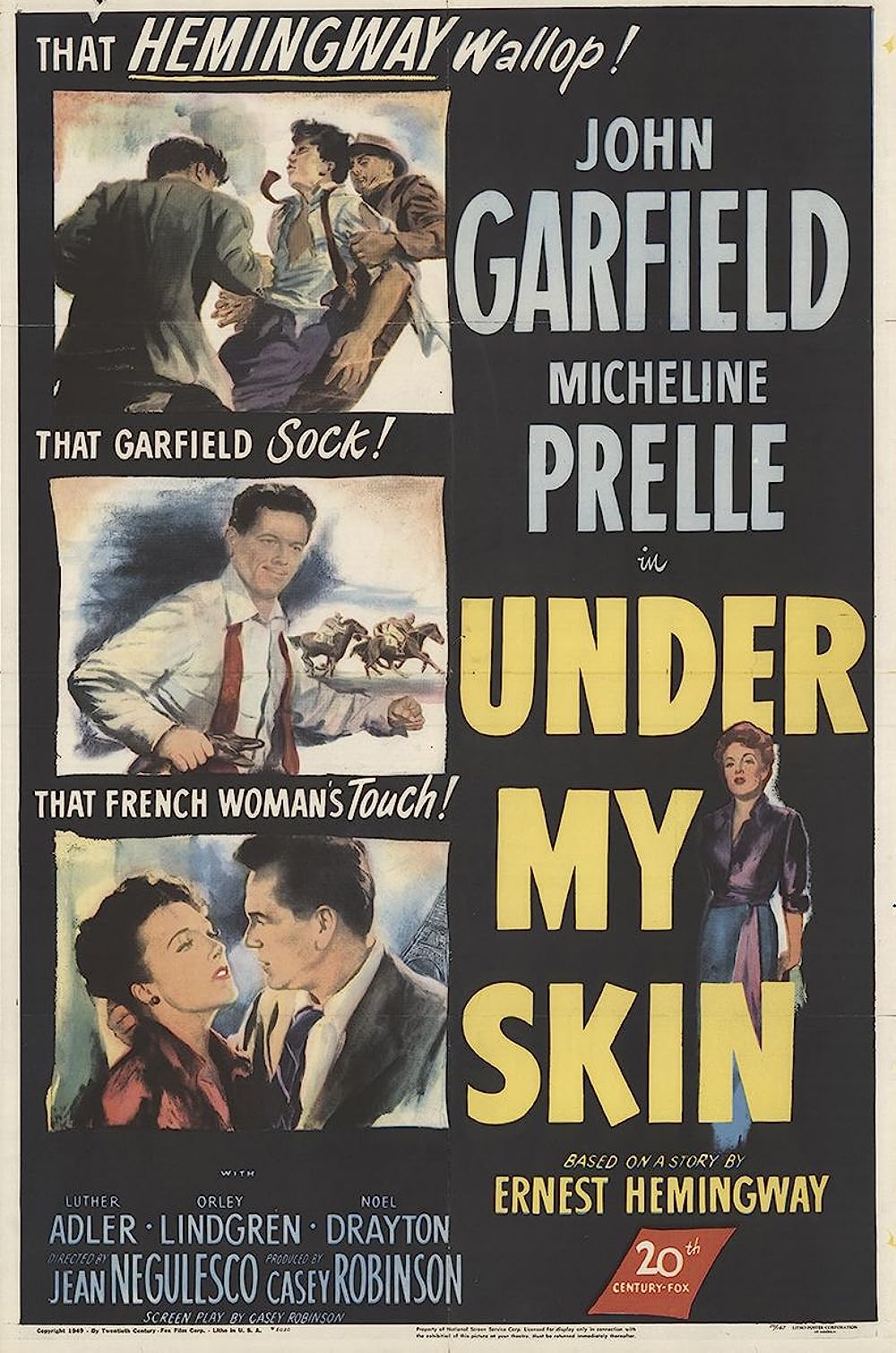 Under My Skin (1950)
Under My Skin (1950)
directed by Jean Negulesco; starring John Garfield, Micheline Presle
There are a lot of reasons to cue up Under My Skin, a film released in 1950 by 20th Century Fox, and only one of those reasons has to do with horse racing.
American movie star John Garfield is another. French movie star Micheline Presle is yet another. And since the whole business is based on a short story by Ernest Hemingway – a story that almost was lost in one of those luggage nightmares – there is a light dusting of historical significance that ties the package in an interesting bow.
Hemingway we know was nuts for the races. Most of a chapter in A Moveable Feast, based on his journals from Paris in the 1920s, is devoted to time spent with his first wife, Hadley, gambling on a tight budget at Parisian racecourses like Auteuil, Enghien, and Tremblay.
“Racing never came between us, only people could do that; but for a long time it stayed close to us like a demanding friend,” Hemingway wrote.
“That was a generous way to think of it. I, the one who was so righteous about people and their destructiveness, tolerated this friend that was the falsest, most beautiful, most exciting, vicious, and demanding because she could be profitable.”
As the story goes, sometime in 1922 Hadley was in their cold water Paris flat when Hemingway wired her to pack up his manuscripts and bring them to Switzerland, where he was on assignment for the Toronto Star.
She got the first part right, then left the suitcase untended on a train. When she returned, the case was gone. Only two stories remained – one of them buried in a drawer back in Paris, the other on its way to a publisher. That one was My Old Man, which became a part of Hemingway’s breakthrough collection, In Our Time. Years later, it was also to provide the source material for Under My Skin.
Hollywood eventually discovered Hemingway, and over the next three decades the movies plundered a shelf full of his novels and short stories, including For Whom the Bell Tolls (1943), which was nominated for a Best Picture Oscar.
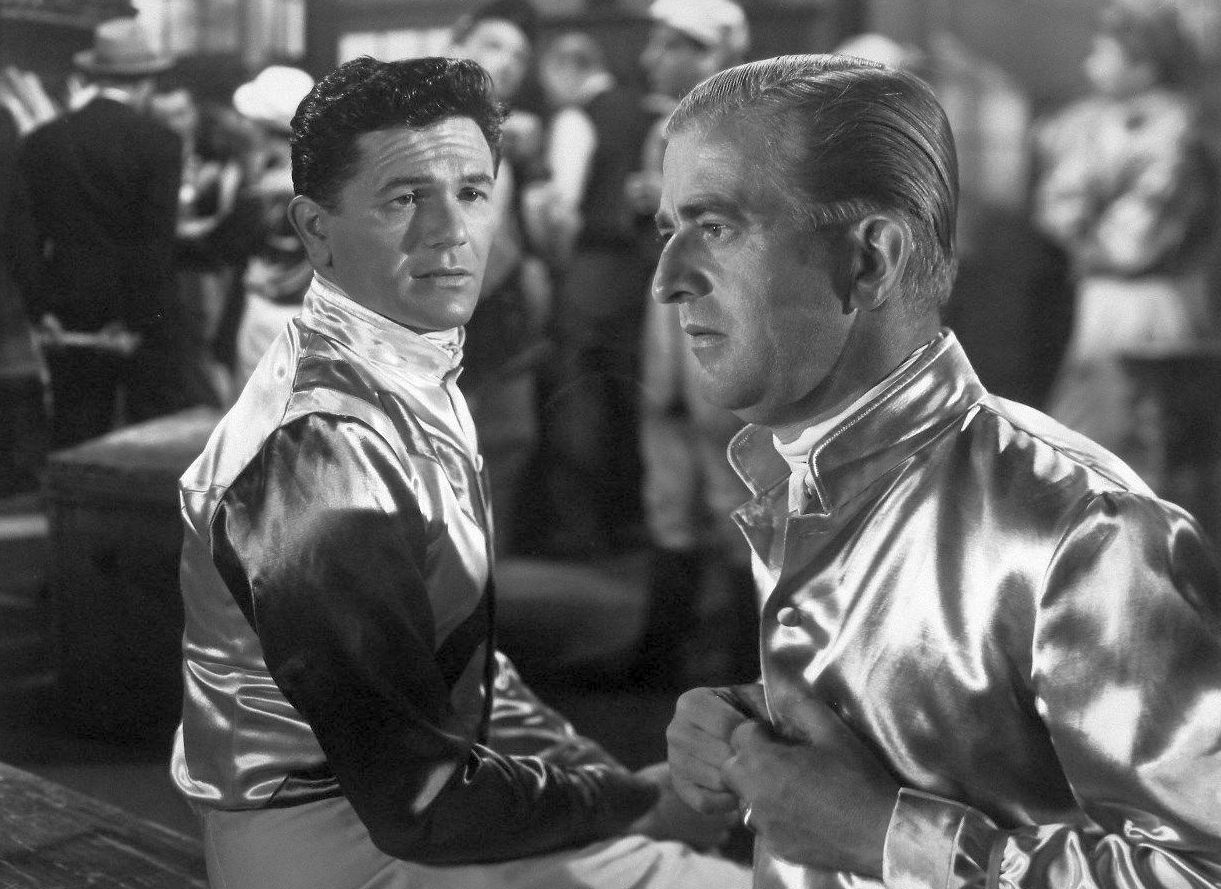 It was not until 1949, however, that a studio got around to My Old Man, most likely because it was deemed unworkable as a feature film unless certain liberties were taken.
It was not until 1949, however, that a studio got around to My Old Man, most likely because it was deemed unworkable as a feature film unless certain liberties were taken.
They were taken.
Run out of places to leave
On the page, the story is a spare, unromantic, first-person narrative from the point of view of Joe Butler, the son of a crooked jockey who has “run out of places to leave.”
Garfield plays the jockey and looks enough of the part. He was never shy about tossing himself around. His studio bio listed him at 5-7 and 150 pounds, which put him cleanly in the category as a rider like Dan Butler who needed to pull pounds.
He also pulled horses, at least enough of them to earn a sour reputation that followed him around European racetracks like a foul smell. At the heart of the tale is how the son sees his old man, warts and all, and how the father grabs on to one money-making angle after another, all slipping his grasp like so much sand.
There is not much actual racing in the film version. Second unit establishing scenes of French and Italian racecourses offer a comforting documentary vibe. But for the most part, the drama is shot on Hollywood studio sets. At the end of the day, the viewer might come for the Hemingway story, but stay for John Garfield.
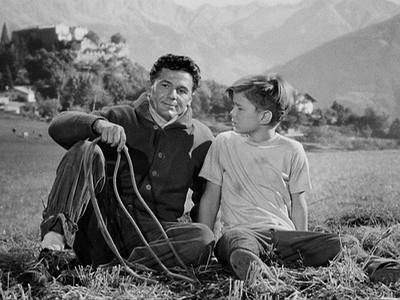 If actors strive for integrity, Garfield had it in spades. In his best roles, he was the tough, complicated guy you always wanted on your side, no matter what he’d done in the previous reel. At one point in the 1940s, Garfield starred in a string of instant classics that included The Postman Always Rings Twice, Body and Soul, and Gentlemen’s Agreement, winner of the 1947 Oscar for Best Picture.
If actors strive for integrity, Garfield had it in spades. In his best roles, he was the tough, complicated guy you always wanted on your side, no matter what he’d done in the previous reel. At one point in the 1940s, Garfield starred in a string of instant classics that included The Postman Always Rings Twice, Body and Soul, and Gentlemen’s Agreement, winner of the 1947 Oscar for Best Picture.
By the time he began filming Under My Skin, the Hollywood blacklist persecuting actors and writers with off-brand political history was snapping at Garfield’s heels. On top of that, he had developed a heart condition that put the brakes on the production for a couple of weeks.
Still, Garfield was a pro, and his honesty comes through the character, even when saddled with a love story and an expanded gangster plot larded onto the core of the Hemingway tale.
The screenplay was written by Casey Robinson, who also produced. Robinson was a well-known commodity as the guy who put dialogue in the mouth of Bette Davis in a half- dozen movies, including her seminal Now Voyager. He was also acknowledged for his writing contributions to Casablanca, although you won’t find his name in the credits because, apparently, he wanted it all for himself.
Reliance on clichés
Robinson had never done a racing picture, which explains his reliance on clichés that Hemingway would have discarded out of hand. But he did warm up with an adaptation of the Hemingway short story, turning The Short Happy Life of Francis Macomber into The Macomber Affair, a 1947 release with Gregory Peck. In that one a hunter gets shot in the back, maybe by his wife.
Under My Skin was directed by the Romanian expat Jean Negulesco, known at the time for directing Jane Wyman (then married to Ronald Reagan) in her Oscar performance as the traumatized title character of Johnny Belinda.
Negulesco also worked with Garfield in two previous films, so at least they were in tune. Negulesco went on to direct big-tent projects like the 1953 version of Titanic and How to Marry a Millionaire, with Marilyn Monroe and a bunch of other people no one noticed.
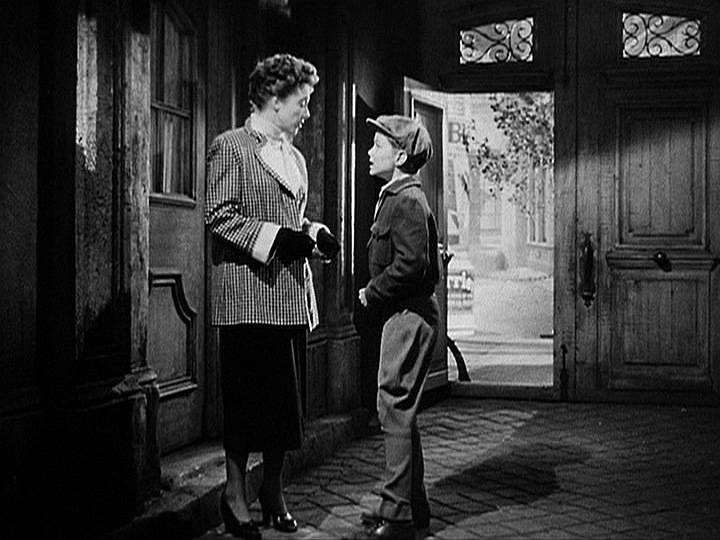 For better acceptance by the awkward American tongue, Micheline Presle’s name was changed to ‘Prelle’ in the credits. She holds her own with Garfield, keeping his self-pitying jockey at bay until it’s clear she is more sympathetic to the effects of the father on the son. Readers of the original will be disoriented, but hopefully not completely turned off, since Presle/Prelle is worth the trouble.
For better acceptance by the awkward American tongue, Micheline Presle’s name was changed to ‘Prelle’ in the credits. She holds her own with Garfield, keeping his self-pitying jockey at bay until it’s clear she is more sympathetic to the effects of the father on the son. Readers of the original will be disoriented, but hopefully not completely turned off, since Presle/Prelle is worth the trouble.
Finally, there is the boy, played by Orley Lindgren, who was basically a background actor until Michael Curtiz cast him as the juvenile version of Kirk Douglas in Young Man With a Horn. But with the narration from the story taken away from the kid in the movie, any chance Lindgren might have had to make an impression other than ‘he was fine’ is lost.
Bitter, inevitable ending
There is no tampering with Hemingway’s bitter, inevitable ending to My Old Man. The movie version does add a layer of gloss that makes a viewer long for the bite of the original, if they have read it.
But such a calculus is never completely fair when something goes from page to screen. Anyway, racing aficionados don’t need to be told the profession is dangerous – there are statues and plaques at racetracks dedicated to George Woolf, Avelino Gomez, Jack Robinson, and others standing in mute testament – or that there is price in tears and regret to be paid by those left behind.
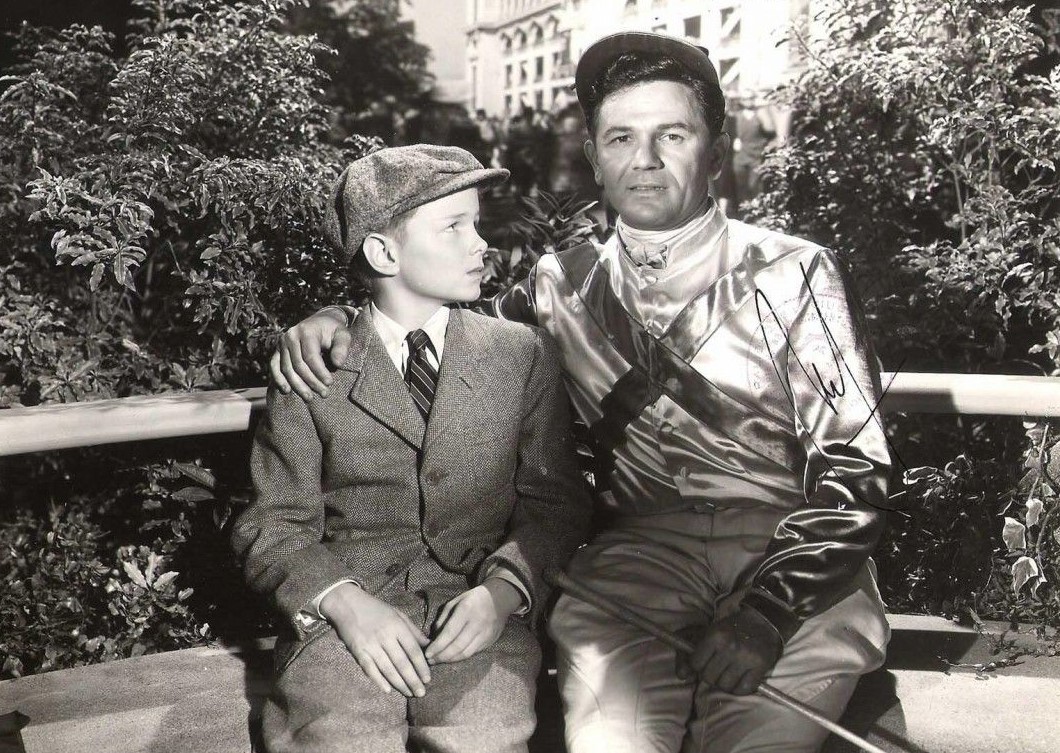 Filmmakers took a couple more swings at My Old Man, notably a 1979 made-for-TV movie that turns the father into a rat of a trainer (played by Warren Oates) and the kid into a daughter who becomes a jockey (Kristy McNicol). In the words of that eminent animated film critic Jay Sherman: “It stinks!”
Filmmakers took a couple more swings at My Old Man, notably a 1979 made-for-TV movie that turns the father into a rat of a trainer (played by Warren Oates) and the kid into a daughter who becomes a jockey (Kristy McNicol). In the words of that eminent animated film critic Jay Sherman: “It stinks!”
Of considerably higher quality is a small gem issued in 1969 as part of a ‘Short-Story Showcase’ bankrolled by Encyclopaedia Britannica and brought to life by Larry Yust, a multi-faceted artist, photographer, and director.
Yust took dialogue straight from Hemingway, trimmed a bit here and there to keep things moving, and came up with 25 minutes of tight drama that grips like a vice, right down to Joe’s last thoughts in response to the exhortations of another jockey to ignore what sore losers are saying about his old man: “But I don’t know. Seems like when they get started, they don’t leave a guy nothin’.”
• There is a low quality link to the ‘Short-Story Showcase’ version of My Old Man and a decent version of Under My Skin, both via YouTube. If you’re looking for the TV movie, though, you’re on your own.
• View all Jay Hovdey’s features in his Favorite Racehorses series
Horse racing at the movies: The Killing is a polished gem in a poisonous setting
Horse racing at the movies: Calvin Borel’s reaction to winning on Mine That Bird was movie magic
Horse racing at the movies: The Black Stallion is a bonafide classic among the greatest horse fables
Horse racing at the movies: Casey’s Shadow gets into the details like few feature films
Horse racing at the movies: Champions was different from the maudlin crowd
View the latest TRC Global Rankings for horses / jockeys / trainers / sires


